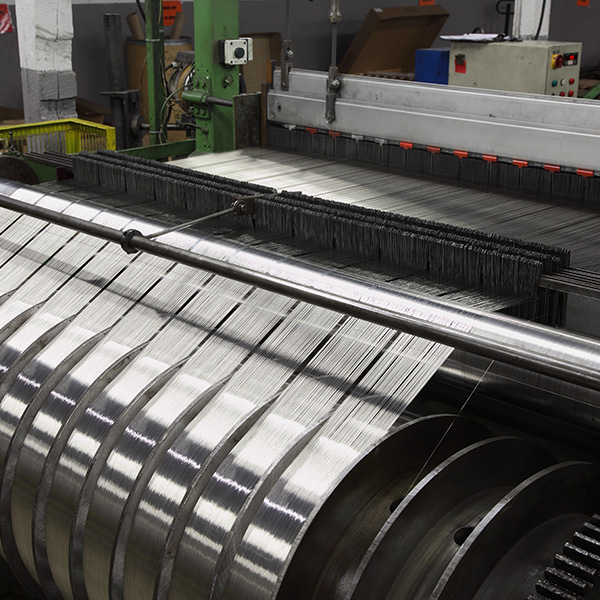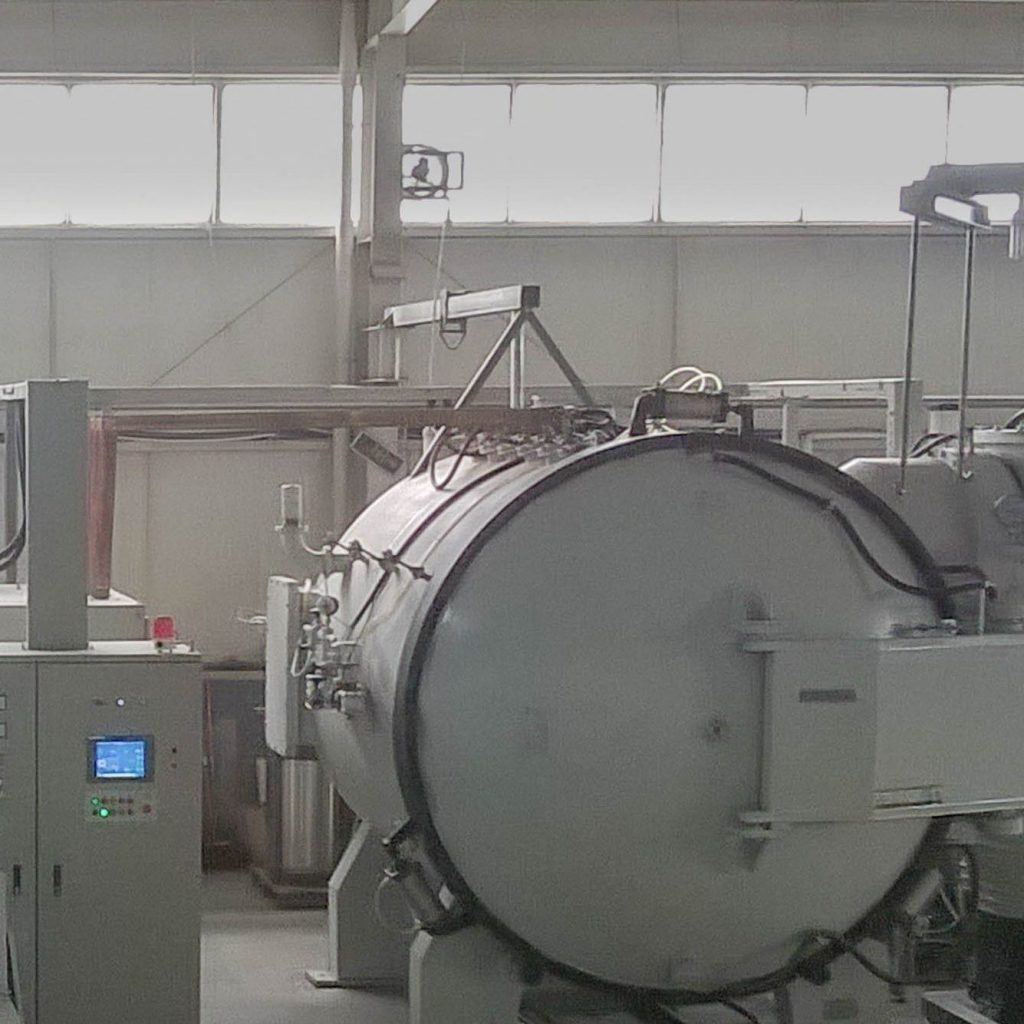Home » Capabilities » Processing Capabilities
Processing Capabilities

Wire Mesh and Cloth Weaving
To meet customer demand for specialized mesh and localized manufacturing, we weave technically advanced weaves such as sound modulation acoustic mesh and high-value alloys in our North American and European locations.

Slitting & Shearing
We offer slitting and shearing services to deliver a perfectly cut roll or piece part to your production line, allowing you to purchase only the wire cloth that you need and have it ready for production.
read moreSlitting – cutting the wire cloth lengthways and rolling up to provide the exact width in the reel you require to run your operation. Slit coils can be provided with or without cores and our equipment is capable of handling widths as small as ¼ inches and lengths up to 2,000 feet.
Shearing – cutting the strip from the reel across the width, producing a finished piece to the size required in production. Our skilled operators ensure that the wire cloth or mesh has a clean-cut and does not fray

Mesh Coating, Mesh Plating, & Other Finishes
We offer different mesh coatings and finishes that can enhance the function, corrosion protection, durability, aesthetic value and electrical properties of the mesh.
- Common metals plated on wire mesh include nickel (Ni), copper (Cu), cadmium (Cd), zinc (Zn) or tin (Sn).
- Exotic metal mesh coatings such as Titanium (Ti), Silver (Ag), Gold (Au) and Tungsten (W) can be plated onto 304 Stainless Steel, providing a more cost-effective way of meeting design requirements.
- Non-metallic mesh coatings include epoxy coated wire mesh; also polyester, Teflon (PTFE), black vinyl (PVC), colored powder coating or galvanized finishes.
- We can apply Hydrophobic coatings directly onto the mesh.
- Chemical processing can provide electro-polished, anodized, passivated, or etched finishes to the surface of the wire mesh.

Cleaning
Many customers require us to remove oils, dirt, or debris from their wire, or wire cloth components. We offer a wide variety of cleaning methods such as vapor degreasing, ultrasonic, aqueous, or thermal cleaning.

Calendering
Calendering flattens the wire and reduces the thickness providing a uniform and precise material thickness throughout the mesh. This is used for applications where a controlled thickness is necessary. This process also increases the stability of the woven wire cloth.

Heat Treatment
We offer batch and strip/strand heat-treating using either vacuum or reducing atmospheres for the following processes:
Annealing – Improves ductility (i.e. increase elongation, reduce brittleness), enhancing the formability of wire and wire mesh which allows for more consistently formed parts and less scrap. Annealing will remove the stresses created in the wire drawing and weaving processes with a full anneal or stress relief based on your specific requirements. We can also offer NADCAP certified annealing where needed for your parts.
read moreSintering/Diffusion Bonding – Creates a metallurgical bond between the wires in our high temperature, controlled atmosphere ovens. This treatment can improve wire cloth rigidity, conductivity, and reduce fraying. This process can be done with a single layer of wire cloth, or multiple layers of wires cloth and other porous metal media (sometimes referred to as laminating). These sintered products can be created to meet your very specific needs in filtration, dewatering, and other applications. Multi-layer laminates are most often used when a filtration layer needs to be combined with support layers for particle retention and durability.
show less
Welding (Tig/Mig/Resistance/Laser)
We have extensive capabilities to assemble smaller filtration and separation components using automated spot, seam, and circumferential resistance welding processes. Larger filters, housing, and other components are manufactured using TIG, MIG, and Laser welding capabilities. Our processes are designed to ensure strong, quality welds while focusing on precision and repeatability.

Laser Cutting
Our laser cutter provides us with additional capabilities to cut precise parts for filtration components. In addition, it allows us to process small runs and prototypes where a blanking machine is cost-prohibitive.